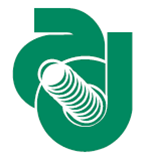Speaker
Mr
Iurii Sorokin
(Goethe University Frankfurt)
Description
The goal of the Compressed Baryonic Matter~(CBM) experiment is study the phase diagram of strongly interacting matter at high baryonic densities. It is going to be done by colliding proton and heavy ion beams of energy up to 35~AGeV with fixed carbon and heavy element targets. The physics program of the experiment requires to reconstruct all charged products, measure their momenta with high resolution, accurately identify charged hadrons, muons and espcecially electrons, detect neutral hardons and photons and measure their energy.
The charged multiplicity is expected to come up to 1000 per central Au-Au collisions which necessitates high detector granularity. The experiment is going to run at high interaction rates: $10^6$~$s^{-1}$ for Au-Au collisions and $10^7$~s$^{-1}$ for p-C collisions, and self-triggered read-out electronics will be used.
The key element of the planned detector setup is the Silicon Tracking System, which will be based on double-sided p-in-n silicon strip detectors with 50~$\mu$m pitch and~300 $\mu$m thickness. It has to enable momentum resolution of 1~$\%$, time resolution of about few nanoseconds, and stand up to $3\cdot10^{13}$ neutron equivalent dose.
The CBM Silicon Tracking System design is presented as well as the current progress in it's development.
for the collaboration
CBM
Author
Mr
Iurii Sorokin
(Goethe University Frankfurt)

